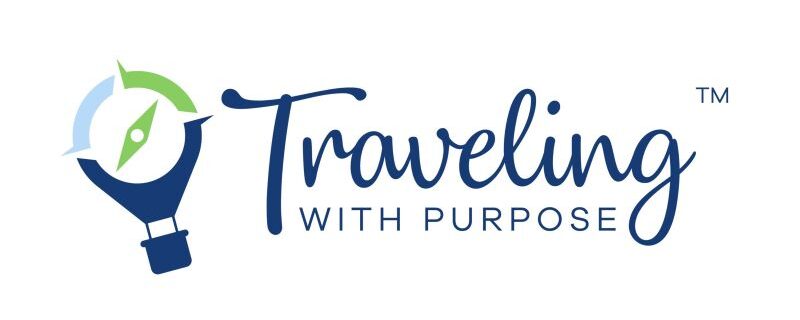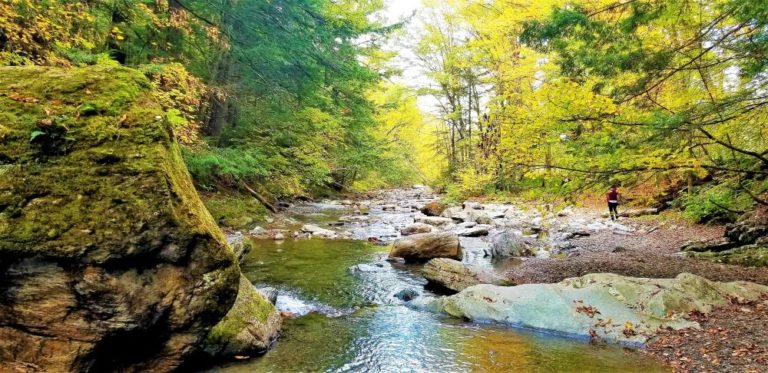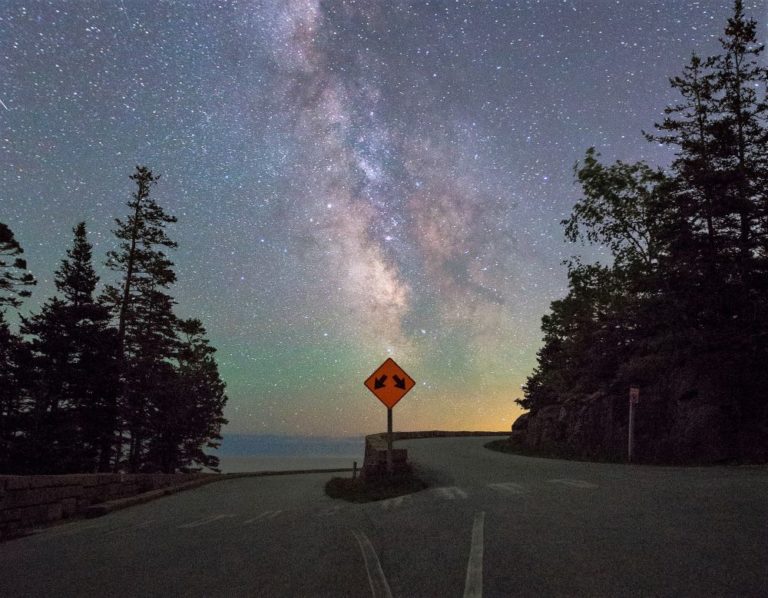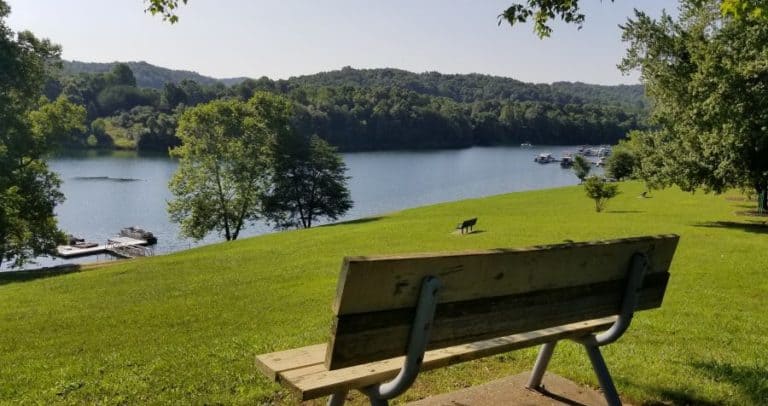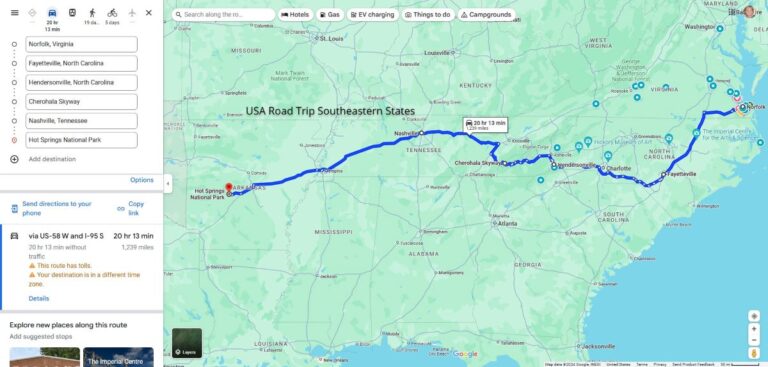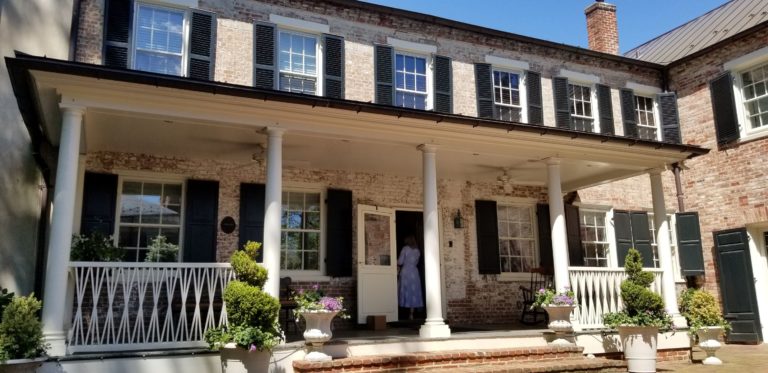10 Important Tips For Visiting Holocaust Museums, Memorials & Historical Sites
This site contains affiliate links to products or services that I recommend. Any purchases made through these links don’t add anything to your purchase price. It helps me keep the lights on and bring you quality travel tips. As an Amazon Associate, I earn from qualifying purchases. Thanks so much for your support!
Holocaust museums, memorials, and historical sites may not be your idea of a jolly holiday, but there are times in our lives when a journey is much more important than that. This is what it means to travel with purpose. Let’s consider why we should visit a Holocaust museum or memorial with our families and how we can prepare ourselves and others for the sometimes uncomfortable, but valuable experience.
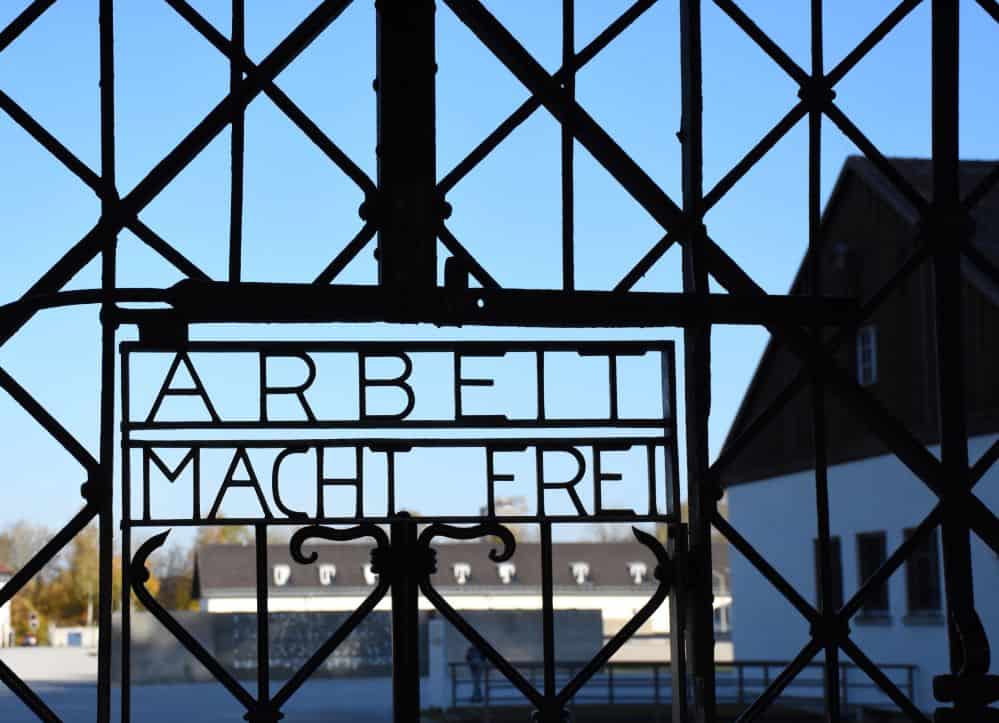
How much do you really know about the Holocaust? Do you understand the complexities of how so many people were convinced to participate in or allow something so horrendous to happen? Do you know how to identify the subtle changes that occurred and would you recognize if they were happening today?
Why Learn About the Holocaust?
A recent eye-opening survey of Americans between the ages of 18 and 39 (Millenials and Gen Z) revealed that 23 percent of those surveyed believed the Holocaust was a myth or had been exaggerated. Nearly half of all respondents said they have seen Holocaust denial or distortion posts online. And worst of all: 1 in 8 (12 %) said they had definitely not heard or didn’t think they had heard about the Holocaust. This seems to indicate that we can’t take a back seat and rely totally on our education systems to teach our children about these important events in our history.
The Holocaust of World War II was not merely another series of wartime events. These atrocities revealed the deep depravity of what humans are capable of doing to gain and retain power. The discrimination, anti-Semitism, torture, murder, and genocide in this time period are unrivaled in history. Over six million Jewish people, 2 to 3 million ethnic Polish, and many others were systematically murdered by the German Nazi regime. The atrocities took place over a wide swath of Europe. Not just in one or two remote, isolated areas.
“Today, white supremacists and neo-Nazis are resurgent, organizing and recruiting across borders, intensifying their efforts to deny, distort and rewrite history, including the Holocaust”
United Nations Secretary-General – António Guterres – 2021
While topics like this aren’t always comfortable to talk about, we do a disservice to our children and the world at large when we avoid teaching them about the dangers and realities of the flaws of humanity at an appropriate age.
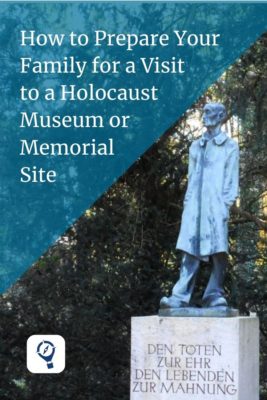
Which Holocaust Museum Should I Visit?
I’ve had the honor of visiting the U.S. Holocaust Museum in Washington DC, Dachau Concentration Camp Memorial, near Munich, Germany. We also visited the Dutch Resistance Museum, the Holocaust Name Memorial, and the Anne Frank House all in Amsterdam, Netherlands. All of these sites are very different from each other. They all opened my eyes even more to the realities of an unimaginable chapter of history that seemed mostly abstract when I learned about it in school.
Seeing and touching real places, hearing true stories, and breathing the air where victims and survivors struggled all helped me understand so much more than a textbook could ever teach.
What Kind of Holocaust Sites Can I Visit?
There are generally four types of Holocaust museums and memorial sites around the world. Each serves an important purpose in educating, commemorating, and reminding us of the horrific tragedies of World War II. They also remind us that human atrocities and genocide continue to happen in other regions of the world even today. The lists below are far from complete, but hopefully, they’ll give you some ideas of places to consider for learning more about the Holocaust.
Cities like Berlin, Germany, or Krakow, Poland may immediately come to mind for Holocaust Museums. The lists below will give you more Holocaust sites. But, if you’re planning a trip, especially to Europe, why not take a moment to do a quick search for “Holocaust at…” (your destination) to see if there are lesser-known sites to visit nearby?
Holocaust Memorials & Monuments – around the world
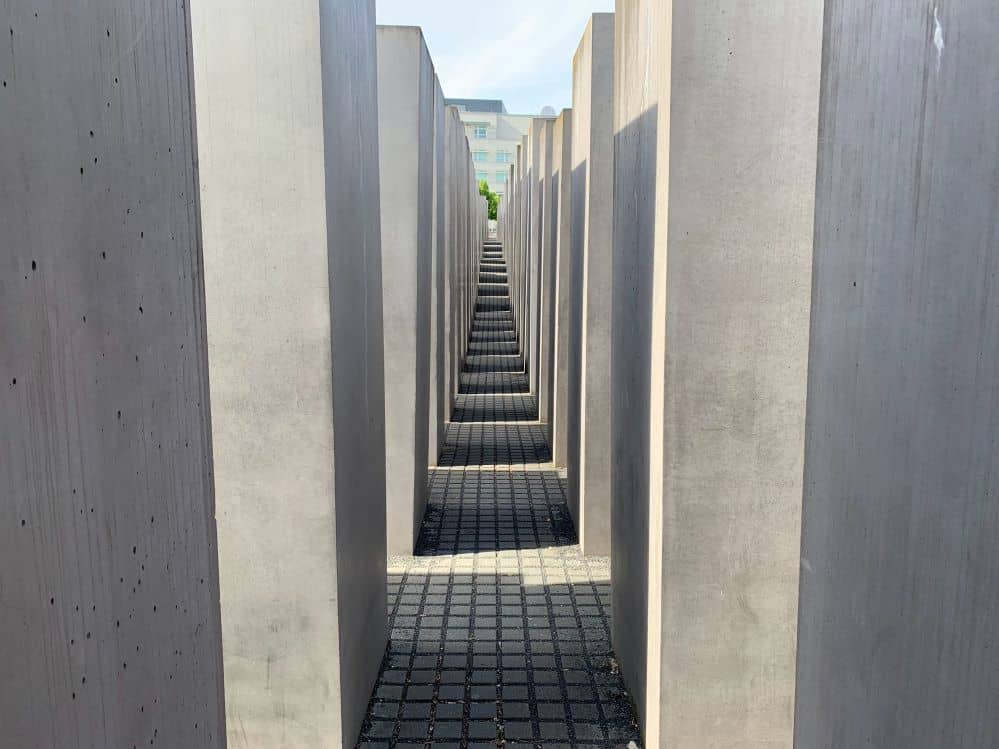
Holocaust Memorials are often statues, structures, or sculptures that serve as a visual reminder of lives that were lost or changed forever. They may not have much additional information about the period, but help us remember the tragic events. These are just a few of the Holocaust memorials found in surprising places around the world.
Anne Frank Human Rights Memorial – Boise, Idaho (USA)
Holocaust Memorial and Information Centre (Memorial to the Murdered Jews) – Berlin, Germany (Europe)
Suriname Holocaust Memorial – Neveh Shalom Synagogue, Paramaribo, Suriname (South America)
Memorial Portal of European Sites of Holocaust Remembrance – listings of other sites in Europe
Holocaust Museums – around the world
These thought-provoking Holocaust museums contain photos, videos, stories, accounts, artifacts, oral history interviews, and exhibits that teach and document the realities of the Holocaust, genocide, or a specific part of the era. Resistance museums focus on how various regions fought against the atrocities of Hitler and the Nazis.
There are Holocaust museums and memorials on every continent except Antarctica. Here are just a few of the many Holocaust museums to consider – listed by continent and country:
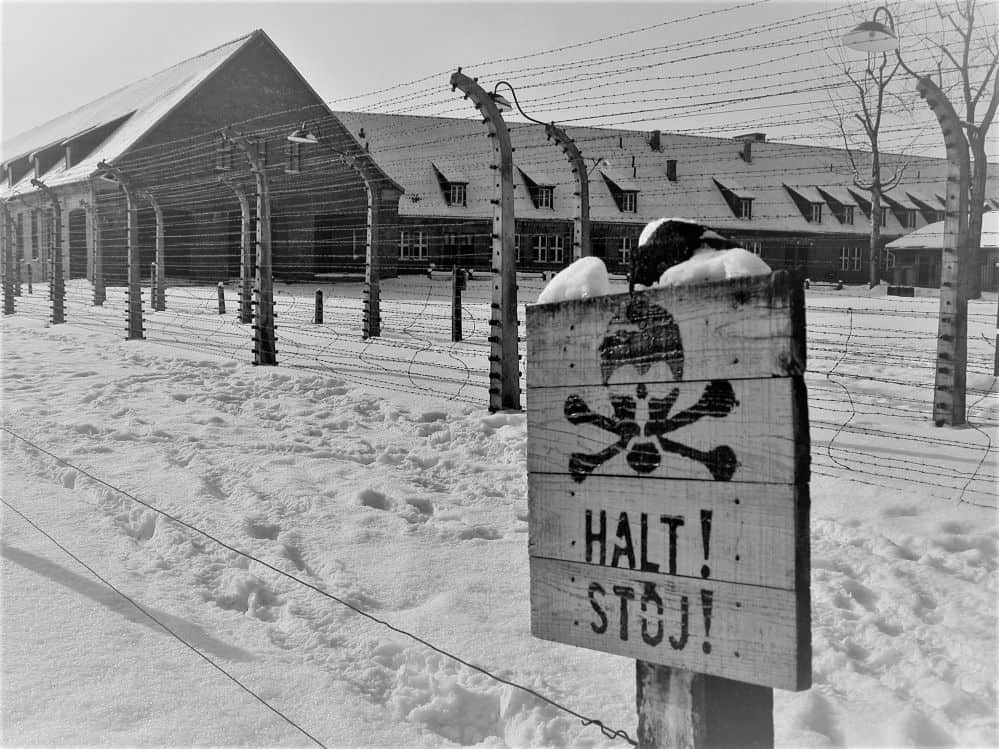
Africa
Cape Town Holocaust & Genocide Centre – Cape Town, South Africa
Durban Holocaust & Genocide Centre – Durban, South Africa
Johannesburg Holocaust & Genocide Centre (JHGC) – Johannesburg, South Africa
Sadly, while there is documentation that Labor and Internment Camps existed in Northern Africa during WWII, I couldn’t find any information about Holocaust museums, memorials, or historical sites that could be visited there. I saw an article from 2019 about a Holocaust Memorial being built in Marakesh, Morocco, and then a later news story saying it was demolished. If you know of any Holocaust-related destinations in Africa, please let me know.
Asia
Shanghai Jewish Refugees Museum – Hongkou District, Shanghai, China (Tragically ironic considering what is currently happening with Chinese Muslim-minority Uighurs)
Hong Kong Holocaust and Tolerance Centre (HKHTC) – Shau Kei Wan, Hong Kong
Yad Vashem World Holocaust Remembrance Center and Museum of Holocaust Art – Jerusalem, Israel, Middle East
Taiwan Holocaust Museum (Che Lu Chien Church) – Tainan City, Taiwan
Australia – Oceania
Melbourne Holocaust Museum – Elsternwick, Victoria, Australia
Sydney Jewish Museum – Sydney, New South Wales, Australia
Holocaust Centre of New Zealand – Wellington, New Zealand
Europe Holocaust Museums & memorials
Museum of Danish Resistance – Copenhagen, Denmark
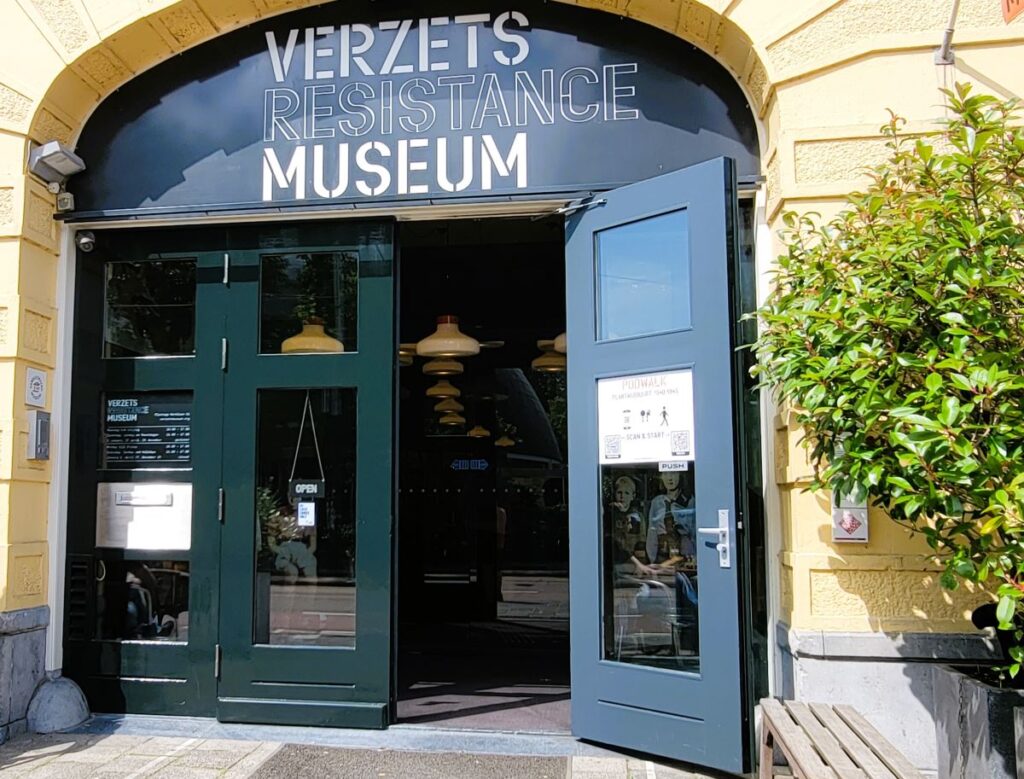
Dutch Resistance Museum – We had the privilege of visiting this museum in Amsterdam, Netherlands recently.
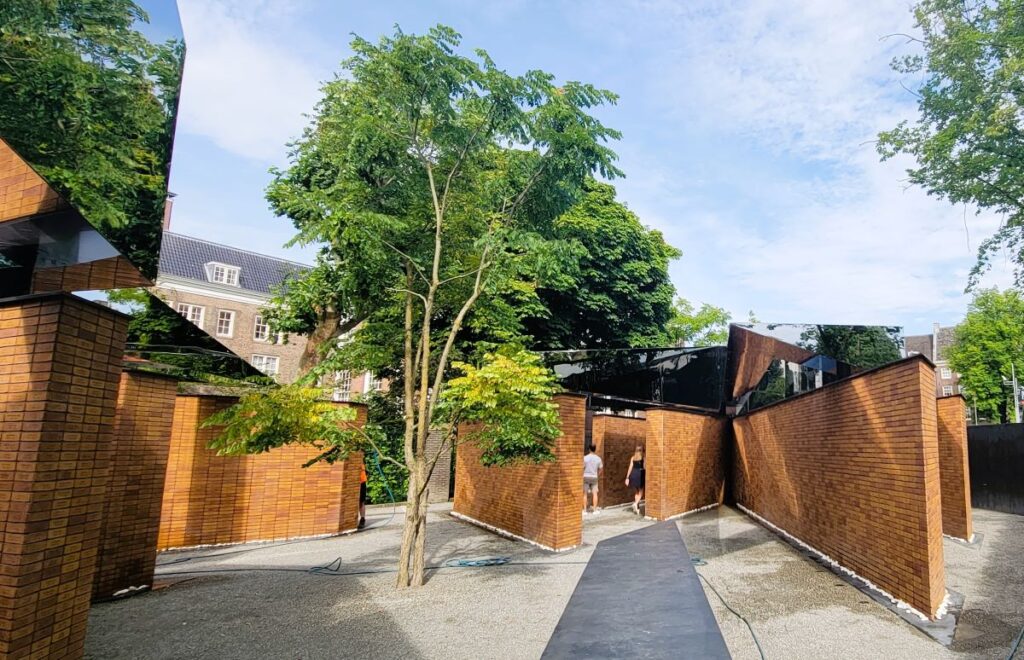
National Holocaust Names Memorial – We walked through this memorial site in Amsterdam and found the name of Anne Frank among over one hundred thousand victims’ names on the walls.
Norway Resistance Museum – Oslo, Norway
Warsaw Rising Holocaust Museum – Warsaw, Poland
Holocaust Exhibition and Learning Centre – Huddersfield, United Kingdom
The Wiener Holocaust Library – London, England, UK – The oldest Holocaust archive in the world
North America Holocaust Museums & Memorials
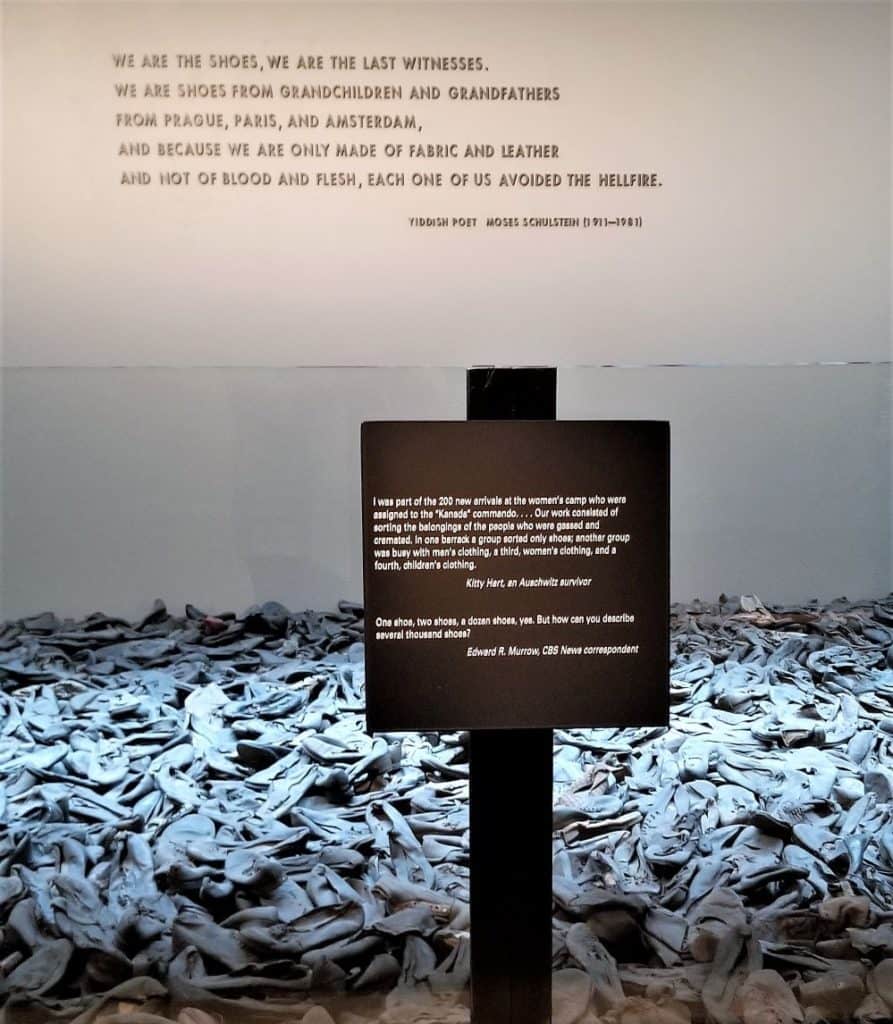
Montreal Holocaust Museum – Montreal, Canada
Holocaust Museum LA – Los Angeles, California, USA
Museum of Tolerance – A Simon Wiesenthal Center Museum – Los Angeles, California, USA
United States Holocaust Memorial Museum – I’ve visited this museum several times and learned something new each visit. It’s in Washington DC, USA
United States List of Holocaust memorials and museums in specific states – there are currently sites in 30 states plus the nation’s capital.
South America
Holocaust Museum of Buenos Aires – Buenos Aires, Argentina, South America
I also found very little about Holocaust museums in South America. Let me know if you’re aware of others.
More Holocaust Museums & Memorial Locations
Worldwide List of Holocaust Memorials and Museums
Holocaust Survival and Rescuer Sites
You can also find heroic accounts of ordinary citizens who went to extraordinary lengths to assist, protect, and hide Jews and others who were oppressed and in danger during the Holocaust. Here are a few examples:
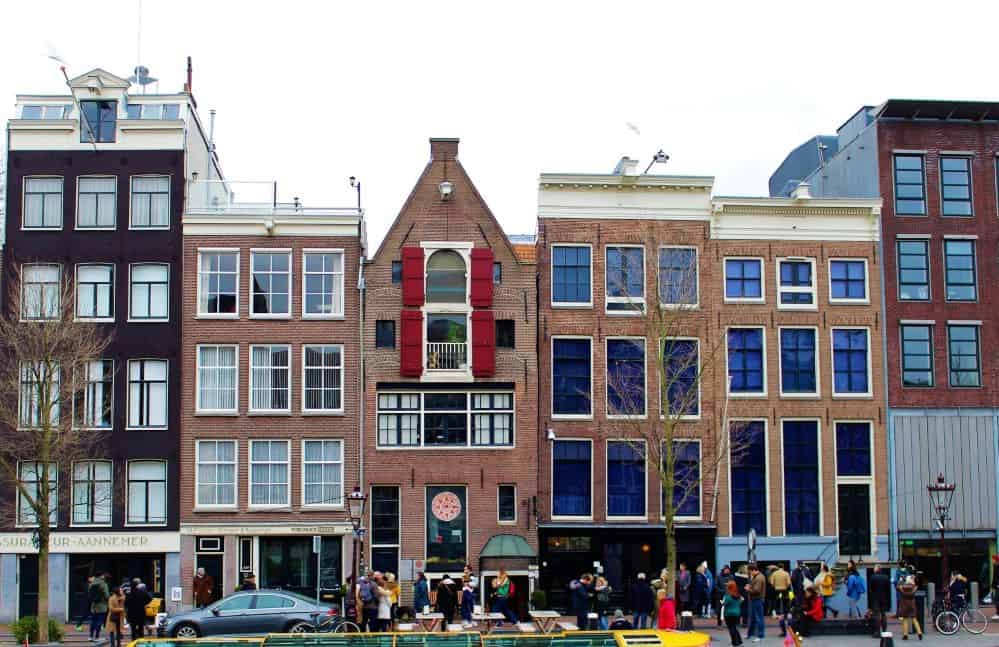
Anne Frank House – Amsterdam, Netherlands – Visit the home where Anne Frank (a Jewish girl) hid for more than 2 years with several others during World War II. This is where she wrote her famous diary. My post about Holocaust Books will share more about her diary.
Corrie Ten Boom House – Haarlem, Netherlands – the actual location of the book, “The Hiding Place” which tells the riveting story of how a middle-aged Dutch watchmaker became a heroine of the Resistance and a survivor of Hitler’s death camps. My post about Holocaust Books shares more about her books.
Oskar Schindler Factory – Krakow, Poland – the real-life setting of the true story and award-winning movie by Steven Spielberg – “Schindler’s List”. My post about Holocaust Books and movies shares more.
Holocaust Historical Sites: Concentration Camps, Extermination Camps, Ghettos
Click to enlarge the map below to see the European locations of Extermination camps, Concentration camps, cities with oppressive ghettos, major massacres, and major deportation routes.
The list that follows is a sampling of links to some of these historical sites.
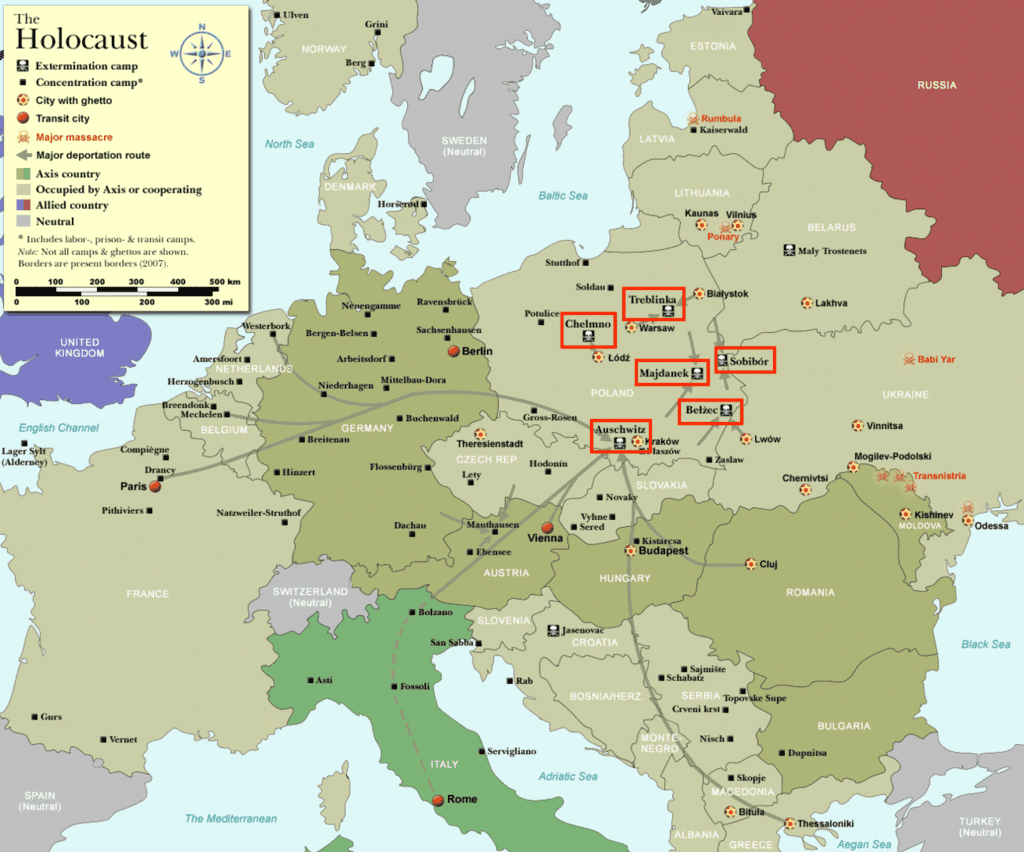
Auschwitz_Birkenau Memorial and Museum – Holocaust Extermination site – a UNESCO World Heritage Site near Krakow, Poland
Dachau Concentration Camp Memorial Site – We visited this site near Munich, Germany
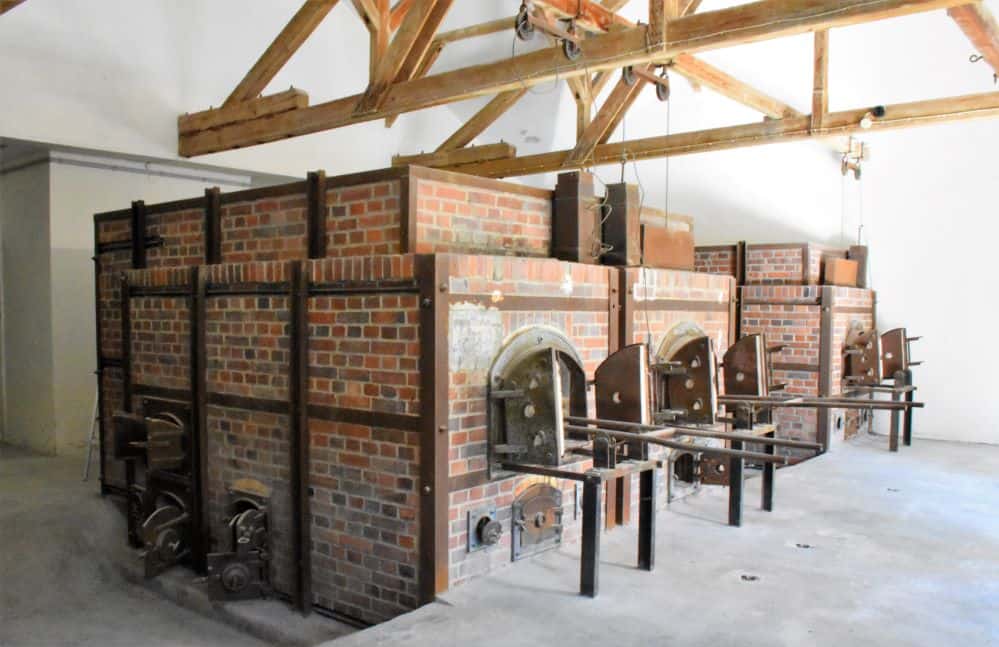
Flossenbürg Concentration Camp Memorial – Flossenburg, Germany
Mauthausen Memorial (Labor Camp & Stairway of Death) – Mauthausen, Austria
Nazi Party Rally Grounds and Documentation Center – Nuremburg, Germany
Oradour, L’Auze Martyr Village and Memory Center (Ruins of an entire village massacred and destroyed by Nazis) – Oradour-sur-Glane (near Limoges), France
Terezin Memorial (Theresienstadt Concentration Camp – Památník Terezín – Malá pevnost (60 KM from Prague) Czech Republic
More European Holocaust Historical Sites Open to the Public – This list from the Jewish Virtual Library contains links to Holocaust-related locations in Austria, Czech Republic, France, Germany, and the Netherlands.
What is the Earliest Age That’s Appropriate to Visit a Holocaust Site?
While the truth about the Holocaust is vital to be passed along to the next generation, the subject matter and visuals can be graphic and troubling for a young mind to process. Care should be taken not to expose a child that’s too young to truly understand and assimilate the information. Experts suggest early adolescence is an appropriate time for parents to offer details about the Holocaust and discuss hate, discrimination, and prejudice.
You know your child best and it’s important to weigh their sensitivity and maturity with the importance of learning about this tragic era of our world history.
To help you decide, each museum and historical site offers minimum age recommendations for visitors. Be sure to check their website before planning your visit.
Holocaust Site Age Recommendations
Here are some examples from a variety of sites:
Anne Frank’s House in Amsterdam, Netherlands has educational programs geared toward students age 11 and older. The content in this home and museum are less graphic than at some other Holocaust sites.
Auschwitz_Birkenau Memorial and Museum near Krakow, Poland is a former Nazi Extermination Camp and recommends that only those 14 and older visit.
Dachau Concentration Camp Memorial Site near Munich, Germany recommends that children under the age of 12 do not visit the museum exhibitions, memorial site grounds, or the former crematorium as some of the display material could disturb them. Dachau guided tours are available only to people, age 13 and older.
Holocaust Museum Los Angeles offers certain galleries for visitors ages 10 and older, while others are recommended for 12 and up.
US Holocaust Museum (USHMM) in Washington DC suggests that children age 11 and older generally have the maturity to learn about the Holocaust. At this age, they can empathize with the individual stories and put those stories in the greater context of history.
For kids age 9-10 and above: The USHMM offers a special exhibit geared specifically for these younger children. It’s called “Remember the Children: Daniel’s Story”. The exhibition was created with the help of a team of experts and has been reviewed by child psychiatrists, educators, and museum interpreters. The museum doesn’t recommend that children younger than 11 years old visit other permanent exhibits in their museum.
If you have any questions or concerns about a child of a certain age, talk with the Holocaust site to get their recommendation.
What Conversations Should I Have With My Kids Before Visiting a Holocaust Site?
The Dachau Memorial Site suggests having a conversation with your kids about their expectations and fears before visiting a Holocaust site.
The USHMM offers lesson plans and other teaching materials that can be downloaded by anyone to review and discuss as a group or family before your visit.
What Other Sources Can Help Us Learn about the Holocaust Before Going?
There’s a wealth of resources online to help prepare you and your adolescents for a visit to a Holocaust museum or historical site. Your child’s school or public Librarian can also help you find all the age-appropriate media and books they have on the topic.
I’m also in the process of creating a separate post with lists of the best books, movies, and documentaries to check into too. Sign up for my weekly newsletter to find out when that’s available.
Should I Schedule a Guided Tour?
Any easy way to check for local guided walking or driving tours specific to Holocaust historical areas is to go to a resource like “Get Your Guide“. Just enter the city and try using keywords like “Holocaust”, “World War 2” or “Jewish History” and see what’s available.
Holocaust museums or historical sites may also offer their own guided tours that help to provide insights and answer questions that come up while you’re visiting. These can be immensely valuable, especially if your kids have a lot of questions and you don’t have a deep knowledge of Holocaust history.
A few examples:
Anne Frank House offers a free audio tour in 9 languages. These local tours are also available.
Dachau offers guided tours for individuals and groups. Individual tickets (max 15 people) can be bought at the Visitors’ Center the day of your visit. Group tours must be scheduled in advance.
Check each site’s visitor information before your trip to see what’s available. In some cases, you’ll want to plan and reserve your tour well in advance of your visit.
What Should We Do Before Our Visit to a Holocaust Museum or Site?
The previous evening or morning the day you plan to visit review the rules of the Holocaust site.
Remind everyone that this is a sacred space that honors those who died, and it should be treated with respect.
Ask if there are any questions, fears, or expectations that need to be discussed before visiting.
Your kids may say that they don’t want to go and you may feel some apprehension yourself. It’s perfectly natural to be hesitant to learn about something that you know will be difficult. But sometimes it’s important to travel with purpose. To set aside time for learning and experiences that will help you and your family gain perspective and maturity about the world and its people.
Plan to wear clothes that show respect for those whose lives were taken. Do not wear clothes or symbols of disrespect to the human dignity of others.
Discuss whether photos or videos are allowed at the Holocaust museum or historical site.
Discuss what members of the group can do if they need to take a break during the visit.
Plan a time and location to meet if you get separated. If there’s a Museum Shop or Gift Shop that may be a good place to meet and look for more resources to take home.
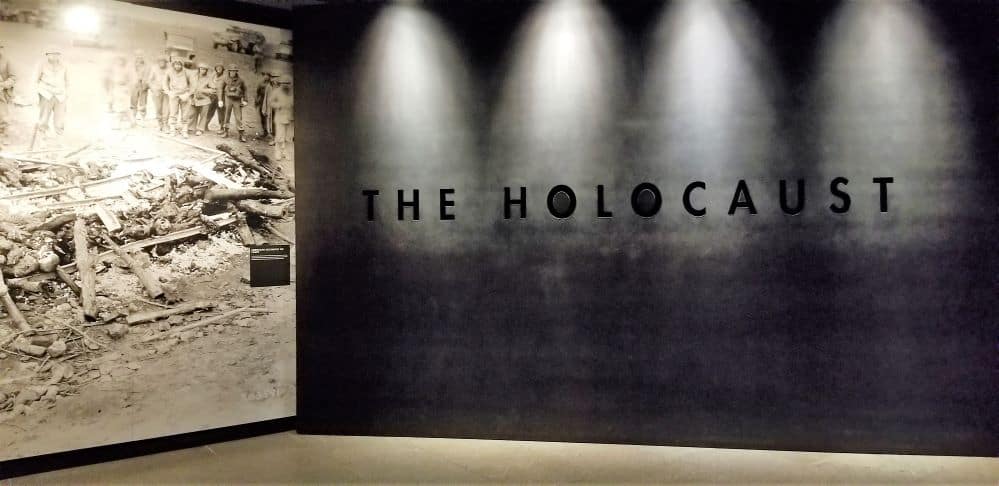
What Should We Do After Our Visit to a Holocaust Site?
Avoid planning any other activities after your visit to a Holocaust-related site. Allow each person some quiet time to reflect and process what they’ve seen.
Consider sitting together somewhere quiet as a family or group to allow for discussion and questions that may have come to mind. If you don’t know the answers, research online, email, or call the Holocaust site that you visited to get the answers.
You can also spend time researching answers online with your child to show them how to find reputable and factual websites.
This may also be a good time to look for books, movies, or documentaries that can help answer any questions or deepen your understanding of the visit.
Dachau Concentration Camp Memorial Site also offers this suggestion:
“After visiting the Memorial Site, it is important that you do not leave your group alone with their impressions. One possibility of reviewing a visit is to simply talk about what has remained in the memory. As part of our half and full-day seminars, the Education Department has developed the exercise: “What’s Remained?”
Although carried out on the Memorial Site, the exercise is also suitable for schools, families, etc. outside the grounds. Photos of Dachau Memorial Site are one way to get a discussion going: sitting in a circle with the photos laid out in the middle, each participant chooses the image that interests or moves them, and they use the photo to speak about what they’ve learned from their visit.”
[Downloadable images of Dachau that can be used for this exercise.]
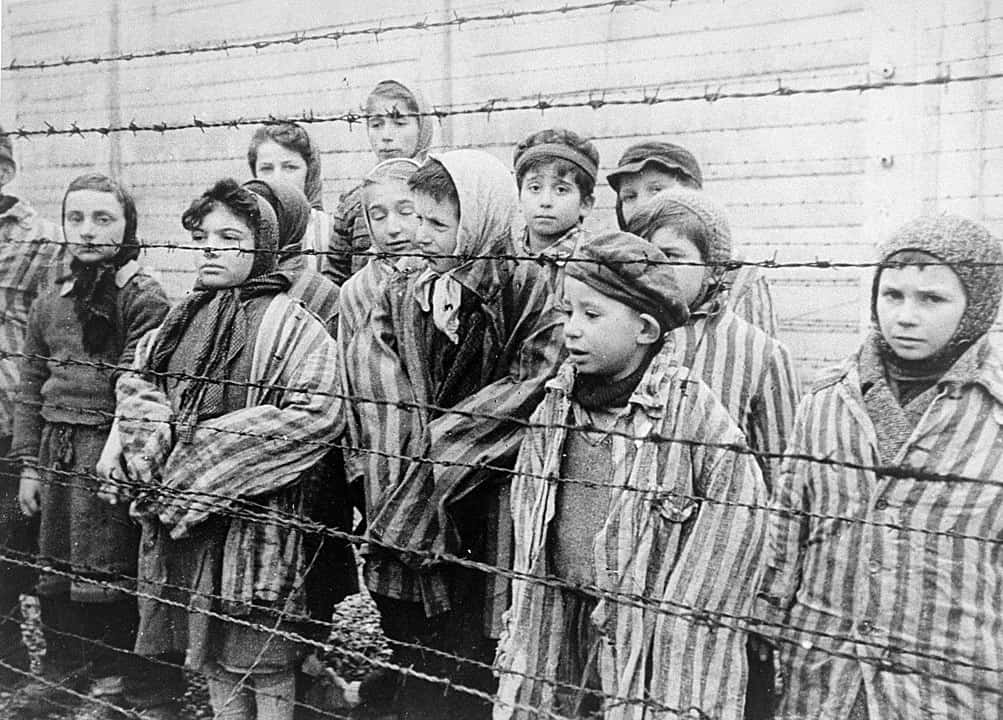
How Can We Learn About the Holocaust if We Can’t Visit?
Most of the Holocaust museums and sites mentioned have some virtual information available in the form of virtual tours, videos, online conversations or lectures, images, books, and other excellent age-appropriate learning materials.
Some, Holocaust museums, like Yad Vashem offer free online courses.
“Facing History and Ourselves” offers excellent Holocaust resources broken down by topics for discussion. Geared to teachers and students, but adaptable to individuals and families.
The U.S. National Archives stores millions of documents relating to current events and world history. This page, honoring Holocaust Remembrance Day shares a sampling of the information they have available. A general search of the term “Holocaust” will bring up much more.
Where Do We Go From Here?
Congratulate yourself and your kids on making the effort to learn about a significant chapter in the history of humanity and the world.
Keep the conversation going.
Talk to your child to see if they’d like to share what they learned with their class at school. Most teachers welcome first-hand accounts of historical sites that other students might not have the chance to visit. The teacher may even offer extra credit for a presentation. If your child brought home a book or resources about the Holocaust offer to let other students borrow them.
It’s very possible that your child’s fellow students or friends will have questions about the Holocaust museum or site visit. Make sure your kids know that you’re available to help find the answers to any questions that come up.
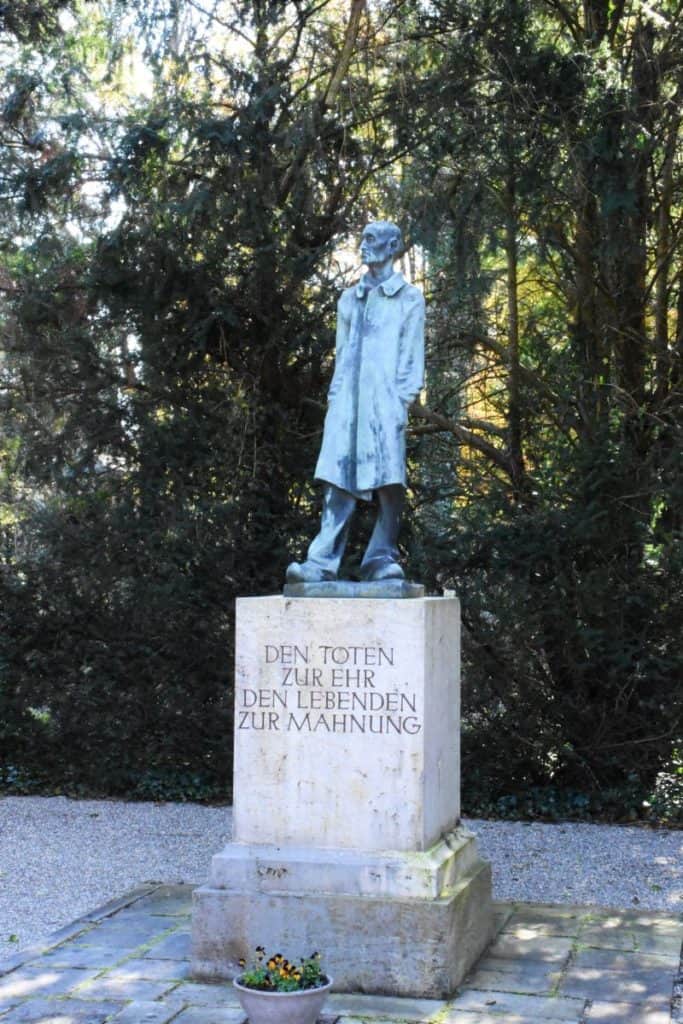
How Can I Apply What I Learned?
Remember that there are extremists who spread lies that the Holocaust didn’t happen. As more first-hand witnesses and survivors pass away, the more memories fade. The passage of time makes it even more important to educate our young people about the Holocaust’s severity and significance.
Understand that human atrocities and genocide are still happening today. Learn more about countries currently involved and those that are at risk through the information provided by the Early Warning Project.
The Early Warning Project is managed by the US Holocaust Memorial Museum with the goal of shining a light, sparking discussion, and taking preventative action where a high risk of genocide and mass atrocities are discovered or predicted.
Encourage your teens to be aware of this and have discussions about what you can do as citizens of the world to combat these kinds of actions.
Tools For Family Discussions
“Facing History and Ourselves” has an excellent website that uses current and historical events to challenge people to stand up against hate and bigotry. While it’s geared toward teachers and students, their resources can often be used in a family setting as well.
This excellent article in Parents magazine about teaching kids about the Holocaust says, “Having these hard conversations about our global history can play a big role in raising moral and compassionate children. Parents should also emphasize the importance of speaking up against injustice. “We need to help them to understand the role of the bystander and what it means to speak out and use your voice. And we ultimately need them to learn about the power of hope.”
Which Holocaust museum or site do you plan to visit with your family? Do you have other questions that I can help with? After your trip, I’d love to hear any other suggestions about how to prepare and how the visit went too.
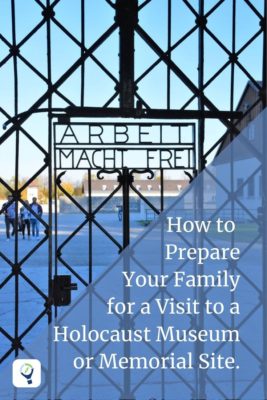
Booking your trip? Here are some of the resources I use myself:
-Book great deals on flights with Cheap-o-Air
-Discover cool lodging with Booking.com
-Find the best prices and perks for cruises at CruiseDirect.com
-Reserve your vacation home rental with VRBO
-Book your car rental with RentalCars.com
-Buy your travel insurance with InsureMyTrip
-Book unique travel tours with Get Your Guide and Viator
-Find delicious culinary experiences with EatWith
-Find even more of my favorite travel resources here.
When you use these links I earn a small commission, at no extra cost to you. This helps me pay the bills and allows me to continue to create and share free tips and advice to help you travel better. As an Amazon Associate I earn from qualifying purchases.
Related Posts
Considering a visit to the Holocaust Museum in Washington DC?
